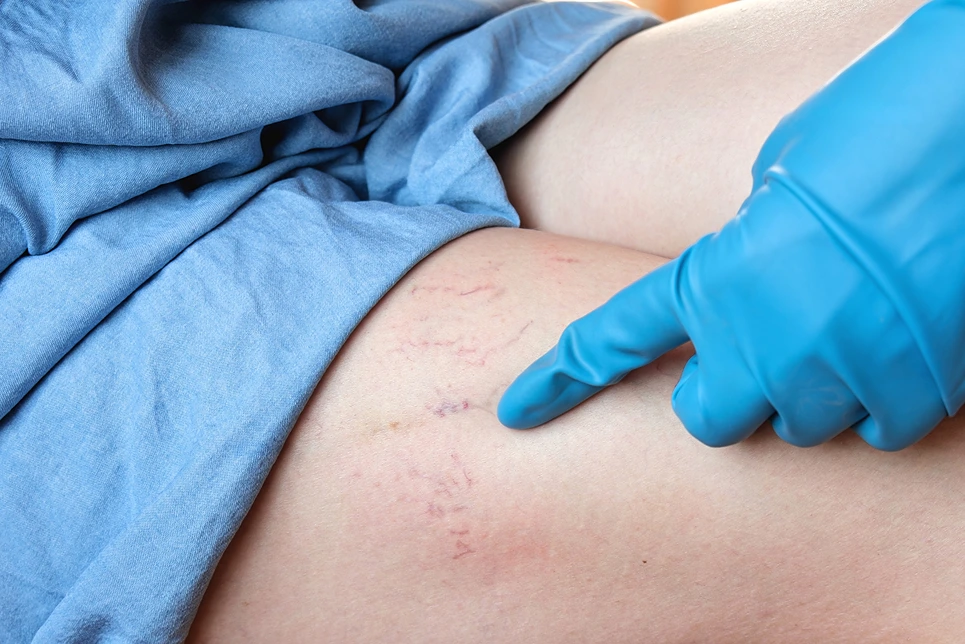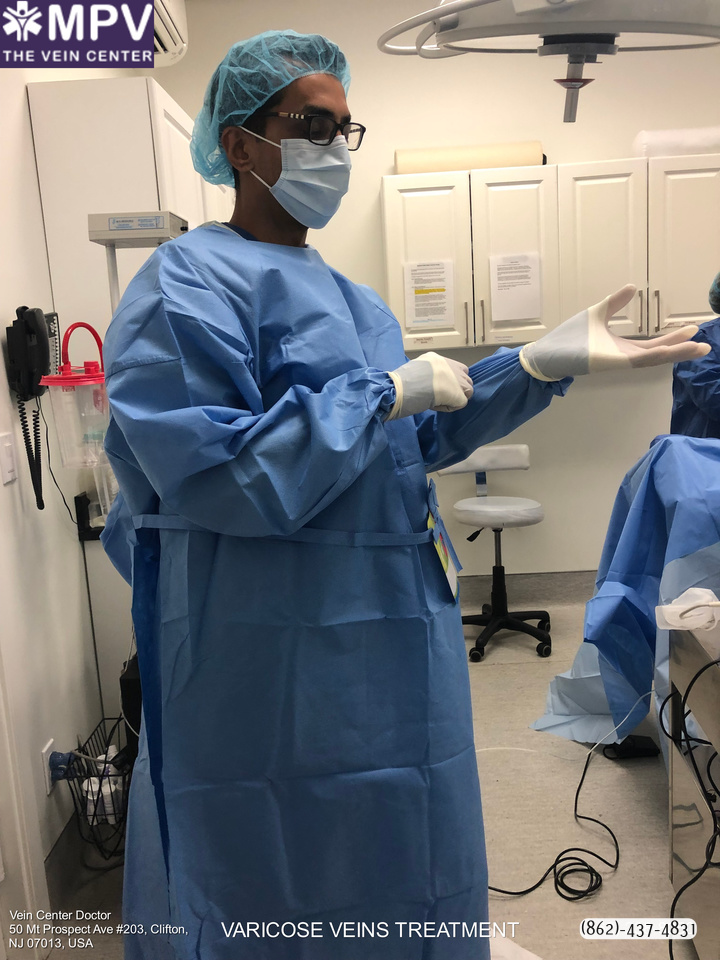No medical condition should be left untreated for a long time. Take varicose veins as an example: with their bulging and twisted appearance, this vein disease is commonly seen as a cosmetic concern. But even if they’re usually harmless and asymptomatic, untreated varicose veins may lead to several complications which can affect your overall quality of life. The most effective way to improve its appearance is by getting a vein closure or removal procedure.
So when should you get treatments to close varicose veins? If you experience persistent pain, leg heaviness, or swelling, you should consider getting varicose vein treatment. Most doctors recommend undergoing vein removal procedures before or during winter months since the cold weather may pose a risk of worsening the symptoms of varicose veins. By having vein treatment during winter, you can prepare your legs for the summer season.
Living with unwanted veins is a thing of the past, when you can simply schedule a free consultation with Vein Center Doctor and find your ideal solution today.
Varicose veins and spider veins can develop in anyone regardless of age and gender. Other factors such as genetics, lifestyle habits, jobs, and prolonged hours of standing or sitting may make them more likely to show up in your early years.
These visible veins are usually a result of chronic venous insufficiency, which is a condition where the valves in your leg veins become weakened or damaged. The one-way vein valves are responsible for pumping blood back up to your heart from the lower extremities. But if you have faulty valves, venous reflux can occur and lead to the accumulation of blood within the blood vessel.
The development of varicose and spider veins are the first warning signs of CVI. Although early symptoms of varicose veins can respond to home remedies, it’s important to get medical treatments to completely close the diseased vein and improve your leg appearance.
You should get varicose vein removal as soon as you notice its appearance to stop them from progressing to more serious vascular health problems. One of the factors to consider before getting varicose vein closure treatment is the season.
According to vein specialists, winter is the most optimal time to undergo varicose vein removal. You can also get vein treatments during the fall months when the weather is cooler as you can rest more comfortably and allow yourself to recover smoothly so you can enjoy your results and regain the confidence to wear shorts by summer.
Here are several reasons why varicose vein procedures are best done in cooler months:
Some patients notice their varicose veins looking worse during the cold season. One reason for this is that they participate in fewer physical activities in winter. The cold temperature makes it more appealing to rest and bundle up at home rather than go outside. This sedentary lifestyle during the winter season can cause your varicose veins symptoms to flare up.
The cold weather can also cause your blood vessels to constrict and increase blood flow in your veins, contributing to a heavier feeling in your affected legs. Winter also comes with dry air which can result in rough skin and potentially cause venous ulcers. So if you want a more comfortable winter, you should get a vein removal procedure during or before the season.
One of the common aftercare reminders for patients who received varicose vein removal is to stay out of prolonged sun exposure. When the treated vein is exposed to the sun’s harmful UV rays, it can increase the risk of excessive bruising and potentially affect the treatment’s results.
But during winter, sunlight is limited and you’re more likely to stay indoors to keep yourself warm from the cold. Additionally, it’s more convenient to wear compression stockings in winter than in summer. Compression stockings are typically recommended for your aftercare routine after a simple laser treatment or injection therapy.
Finally, starting your varicose vein treatment in the fall or winter months lets you have ample time to prepare for the summer season. If you wait until the hot weather to begin your vein removal, your symptoms may worsen and you won’t be able to enjoy summer activities since you’ll have to recover after the procedure. When you get your vein treatments during winter, you won’t have to worry about covering your legs once summer comes.

Varicose veins are a common venous disorder characterized by their bulging, twisted appearance that looks purple or blue in color. Most cases of varicose veins are asymptomatic but there are a number of people who complain about feeling pain and discomfort in their lower leg. If this occurs, you should immediately seek treatment to prevent your condition from getting worse.
Here are the other signs and symptoms of varicose veins that you should watch out for:
Larger varicose veins may be accompanied by leg pain, increased swelling, muscle cramps, and heaviness. This is most likely due to the increased blood flow that puts excess pressure on your leg vein. Individuals who spend most of their time sitting or standing can notice more prominent varicose veins with persistent pain and inflammation.
Untreated chronic venous insufficiency may also lead to visible changes in your skin color. When blood fails to circulate back to the heart, it stretches the vein wall resulting in a bulging and enlarged vein appearance on the skin surface. The excessive inflammation of the veins eventually causes skin discoloration or reddening around the affected area. In some cases, it can also cause changes in texture, making your skin appear dry, thin, or flaky.
The skin around the varicose and spider veins can also sometimes feel itchy. This is a common effect of the condition called venous stasis dermatitis which happens when the blood starts to leak out into the skin from the damaged blood vessel. When you frequently scratch the affected area, sores may start to form, causing fluid to come out, and eventually scab over.
Persistent leg pain and swelling may also be a sign of a blood clot within your great saphenous vein. They can develop due to poor blood circulation or weakened vein walls threatening the vessels to break open. Having blood clots can increase your risk of developing deep vein thrombosis, superficial thrombophlebitis, or peripheral artery disease. In rare cases, a blood clot may travel to your lungs and result in a pulmonary embolism.
Venous skin ulcers are also a possible complication of severe varicose veins. These are open sores that form due to abnormal blood flow, creating pressure in the vessels which can damage the surrounding skin tissue. Leg ulcers can take a long time to heal and increases your risk of getting an infection when it remains untreated.
Varicose veins can be more than just a cosmetic problem, which is why it’s important to see a vein specialist to get an accurate diagnosis of your condition. Depending on the severity of your symptoms, they can recommend different treatments to help provide relief from your varicose veins.
Here’s an overview of the common procedures that can be done to close symptomatic varicose veins:
Works best for: Treating chronic venous insufficiency, small spider veins, and varicose veins
One of the first-line treatments for visible, painful varicose veins is compression therapy. This involves the use of graduated compression stockings, socks, or any tight hosiery that can apply pressure to your muscles to keep the superficial vein compressed and improve blood flow to alleviate symptoms like leg swelling, pain, heaviness, and soreness.
Patients can also wear compression stockings as a preventive treatment to manage the early signs of chronic venous insufficiency. Normally, you’ll wear compression socks during the day to provide comfort in your daily activities and it should be taken off before going to sleep. Some people may wear compression stockings every day, especially if they have to stand for prolonged hours.
Works best for: Treating mild to moderate varicose veins and spider veins
This varicose vein treatment involves the administration of a foam or liquid chemical agent that will irritate the abnormal vein and force them to close. The injected solution causes the lining of the veins to swell and stick together which effectively seals the blood vessel. The treated vein eventually collapses and turns into scar tissue before completely disappearing.
The injection is done in a minimally invasive outpatient procedure. Individuals can return home immediately after undergoing sclerotherapy with minimal downtime and side effects. Its results can be seen within 3 to 6 weeks after treatment and the treated vein is gone for good.
Works best for: Treating large, severe varicose veins, chronic venous insufficiency, and incompetent perforator veins
An ultrasound-guided vein treatment that requires the insertion of a small catheter into the diseased saphenous vein, it usually uses radiofrequency energy – specifically radiofrequency endovenous ablation – to cauterize the damaged vein and cause it to shrink and collapse.
This helps reduce venous pressure in the lower leg and improves blood flow to achieve optimal vein health. An alternative to radiofrequency ablation is a simple laser vein treatment. The results of an endovenous laser treatment or radiofrequency vein removal can be seen within 1 to 2 after the procedure.
Works best for: Treating symptomatic venous reflux and superficial varicose and spider veins
The VenaSeal System is a medical-grade superglue that’s injected into the diseased vein with the help of a small catheter. Once placed in the damaged blood vessels, the VenaSeal solution turns into solid material to block the blood flow and reroute them to a nearby healthy vein. You can see visible improvements in your leg veins within 4 weeks after the procedure.
Most cases of varicose veins can disappear with minimally invasive treatments. But if you notice more serious problems accompanying your varicose veins, such as bleeding, prolonged pain, and swelling, you may need a surgical procedure. Your options for varicose vein surgery include:

You don’t need to wait for varicose veins to get worse before undergoing a vein closure or removal procedure. It’s recommended to get a varicose vein treatment during winter as it will give you enough time to recover and get your legs ready and vein-free for the summer.
At Vein Center Doctor, we offer a variety of state-of-the-art procedures for eliminating varicose veins and spider veins. From sclerotherapy to radiofrequency endovenous ablation, our team can provide you with a safe vein removal experience and provide the best outcomes for your treatment. Contact us now to schedule a consultation or to learn more about our other services.
Find exactly what you need to get rid of your vein-related problems. Dr. Sood and the rest of our team at Vein Center Doctor are ready to help: schedule your free consultation today.
Most Insurance is accepted for treatment